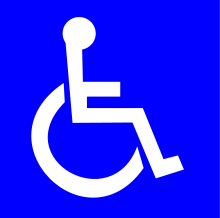Smriti Kak Ramachandran, New Delhi 27 Sep, 2013
To get their metro railway systems sanctioned, States will now have to give in writing how they propose to make the transport system accessible to persons with disabilities (PWDs) and the elderly. The Union Urban Development Ministry has decided that all detailed project reports (DPR) submitted by States wanting a metro system will have to mandatorily include a separate chapter on accessibility for the elderly and PWDs.
The first such instruction has been issued to the Uttar Pradesh Government; Though its DPR for the Lucknow metro is ready, the State Government has been given 15 days to include a separate chapter, detailing what measures will be taken in the civil works as well as in the rolling stock to ensure accessibility for all.
“The DPR for Lucknow metro will have to include specifics on how accessibility will be ensured and this has been conveyed to them. This is the first time that such an instruction has been issued, but we are on our way to making it a policy for all future metro projects,” said C.K. Khaitan, Joint Secretary (Urban Transport) in MoUD.
Accessibility requirements include ramps for wheelchair users, handrails, elevators, special washrooms, instructions in Braille, and facilities for the hearing and speech impaired. Also, seats have to be reserved for PWDs and the elderly in coaches.
“Dr. Sudhir Krishna [Secretary MoUD] is very particular that there should be focus on accessibility in metro systems and it should be incorporated at the initial policy level so that the implementation is smooth. It is easier to plan for features like station design and facilities within the coaches at the time of creating a system than retrofitting at a later stage,” Mr. Khaitan added.
He said the issue of accessibility is also critical vis-à-vis futuristic planning as the number of elderly people is going to increase substantially in the coming years.
Disabled rights activists, however, caution that mainstreaming of PWD and elderly should not be limited to installation of ramps and elevators inside stations and reserving seats in coaches; it should include facilities that allow accessibility to the stations as well.
“There is no seamless access to the stations, which has resulted in stations being islands of accessibility. There are no tactile paths on roads and footpaths leading to the stations, announcements that are useful for the visually disabled are not made regularly, there are no folding ramps that allow safe passage of wheelchair users, or those who use crutches and walking sticks into coaches. Accessibility has to be well configured, linking all aspects of the journey,” said Anjlee Aggarwal of the disability rights’ group Samarthyam.
There is also a need to ensure emergency evacuation plans for PWDs and the elderly, she said.
Source: The Hindu

